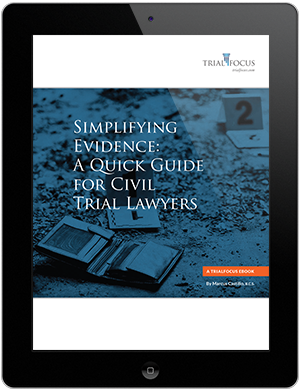In Part I of this series, I introduced the admissibility logic I use in my trial consulting practice. In several other posts I’ve unpacked portions of this logic. After first reminding ourselves of preliminary trial considerations we want to then focus on the purpose for introducing the evidence at hand whether to prove or disprove an element in the case or to address a witness’ credibility. After that’s established, we need to consider whether Rule 403 or privilege considerations could filter out otherwise relevant evidence. Once we have gotten that far in the analysis, we then turn to the mechanics of introducing evidence.
Trial lawyers must be proficient in laying an evidentiary foundation to introduce evidence. This goes beyond the “Why” or “Why Not” for introducing or excluding evidence and gets into the mechanics of introducing the evidence, the “How”.
There are three types of evidence: lay testimony, expert testimony and exhibits whether in the form of documents, digital evidence or tangible items. Each type of evidence is governed by different evidentiary doctrines. Common to all forms of evidence are potential hearsay issues.
Take exhibits as an example to consider. Mechanical considerations could include authentication, chain of custody, the best evidence rule and completeness. The rules set forth a variety of means to shorten the time spent at trial introducing exhibits such as self-authentication and document summaries.
Hearsay is a frequent exhibit objection. One must not only master the hearsay exceptions in Rules 803 and 804 but must also be able to spot non-hearsay. Even if a top-level hearsay exception applies hearsay within hearsay may still be a problem.
I’m going to be posting a course about this logic in the next several weeks. If you would like to take a look at an eBook that overviews all aspects of this logic you can download it below
Mastery of admissibility basics is fundamental to any civil trial practice. The mechanics of admitting text messages and emails fits into the broader admissibility logic we have developed and describe in our free e-Book.

Continue Reading
A New Way to Think About Evidence, Part 1 . If you try cases, then admitting or objecting to the admission of evidence has to be in your life blood. Read more…
A New Way to Think About Evidence, Part 2 . Witness Credibility: the other reason for introducing evidence. Read more…


